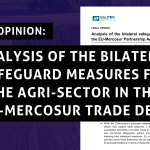MEDIA ADVISORY
Brussels, 31st May –
What is happening: On Thursday, 1st June, the European Parliament and Council will start their first trilogue discussions on the hydrogen and decarbonised gas package, a crucial part of the ‘Fit For 55’ climate and energy package.
Why it is important: The war on Ukraine has shown how easily fossil gas can be weaponised and energy security can be undermined while pushing millions of Europeans into energy poverty with highly volatile and skyrocketing gas and energy prices. As the catastrophic effects of the climate crisis are increasingly felt, the need to tackle emissions is more urgent than ever. With trilogue negotiations kicking off in June, the Gas Package still needs to be significantly improved, to provide a clear pathway for an EU-wide fossil gas phase out by 2035 in line with the Paris Agreement’s objective of limiting temperature increase to 1.5°C.
What’s at stake: Compared to the original proposal, some improvements have been made in the positions of the European Parliament and the Council, such as defining clear guidelines for integrated planning on local level involving multiple stakeholders (beyond gas network operators), decommissioning gas infrastructure or strengthening the definition of low carbon gases. Those elements now need to be consolidated in the final negotiated text. The European Parliament will have to change its position on governance by not allocating future hydrogen infrastructure planning only to gas network operators (ENTSO-G) while the Council will have to accept that integrated network planning includes writing off unused fossil gas networks. CAN Europe will particularly monitor the following elements:
- Strengthening the language on fossil gas phase out by 2035 and decommissioning of unused gas networks: The Council proposed text elements on phasing out gas and decommissioning gas networks without harming end consumers. These improvements are going in the right direction and need to be reinforced, to be in line with decreasing EU gas consumption as projected by ‘REPowerEU’.
- Local and integrated planning preparing gas networks for the future: Essential improvements on Distribution System Operators (DSO) planning supported by the European Parliament need to be maintained. The goals of reducing dependency on gas imports – in particular Russian supply – and tackling the fossil energy price crisis have a substantial impact on the distribution system level. Gas DSO’s future business model needs to be much more integrated and locally steered. Civil society and municipality organisations are calling on giving more oversight to the regulators and helping energy networks to prepare for more renewables, especially in the heating sector while also including the planning of decommissioning networks. An independent actor should make an assessment of the utilisation rates of gas networks on DSO and Transmission System Operators (TSO) levels to help plan the decommissioning of the unused networks.
- A strong definition for low carbon gases: The Parliament’s position, even though not strong enough, managed at least to clarify the definition of low carbon gases by referring to a clear and unambiguous comparator developed in the past under the Renewable Energy Directive (the so called fossil fuel comparator of 94 g CO2eq/MJ defining the carbon content of fossil fuels used in transport). As this threshold already exists under EU law, it has been recycled in this conversation. This definition implies that gases can be qualified as “low carbon gases” if they reduce greenhouse gas emissions by 70% compared to the fossil fuel comparator. However, existing technology can meet stricter thresholds, and for low carbon gases to truly help decarbonize the gas sector, this definition needs to be strengthened from 70% up to 80%, allowing for a full life cycle approach including upstream emissions with strict requirements to mitigate methane leakage and minimum carbon capture rates. While the Parliament managed to agree on a slightly more progressive approach, the Council failed on both aspects: defining the level of the comparator and the reduction against it.
- Ensure hydrogen is prioritised for hard-to-abate industrial sectors: Renewable hydrogen is a valuable and scarce resource, which is required in a pure form (not blended), only for some specific hard-to-abate (and hard-to-electrify) sectors. The gas market package needs to strengthen requirements on priority use and authorised blending rates. Independent assessments for the future demand for hydrogen in hard-to-abate sectors need to be made.
- Independent future hydrogen networks: Furthermore, the European Parliament’s position undermining the creation of an independent hydrogen planning network body (ENNOH) risks opening doors to the fossil gas industry, by giving crucial responsibilities on modelling and planning the future hydrogen network to gas Transmission System Operators (ENTSOG). To avoid any conflict of interest with the fossil fuel industries, it is important to keep the independence of the future hydrogen network, as proposed by the Commission and the Council.
“EU lawmakers should reject a one-to-one replacement of fossil gas with hydrogen and so called decarbonised gases. The gas package should enable the scaling down of fossil gas use, decommissioning of unused networks and ensure that renewable hydrogen is only used for the most strategic applications where electrification is no option. EU lawmakers must not allow vested interests from the gas industry to blow up this last opportunity to strengthen the gas package and lay solid grounds for a real fossil gas phase out by 2035“, said Esther Bollendorff, Gas Policy Expert at CAN Europe
-ENDS-
Contact
CAN Europe will be following the trilogues closely. For any inquiries, please contact:
Seden Anlar, Communication Coordinator: seden.anlar@caneurope.org, communications@caneurope.org
Notes to the Editor:



